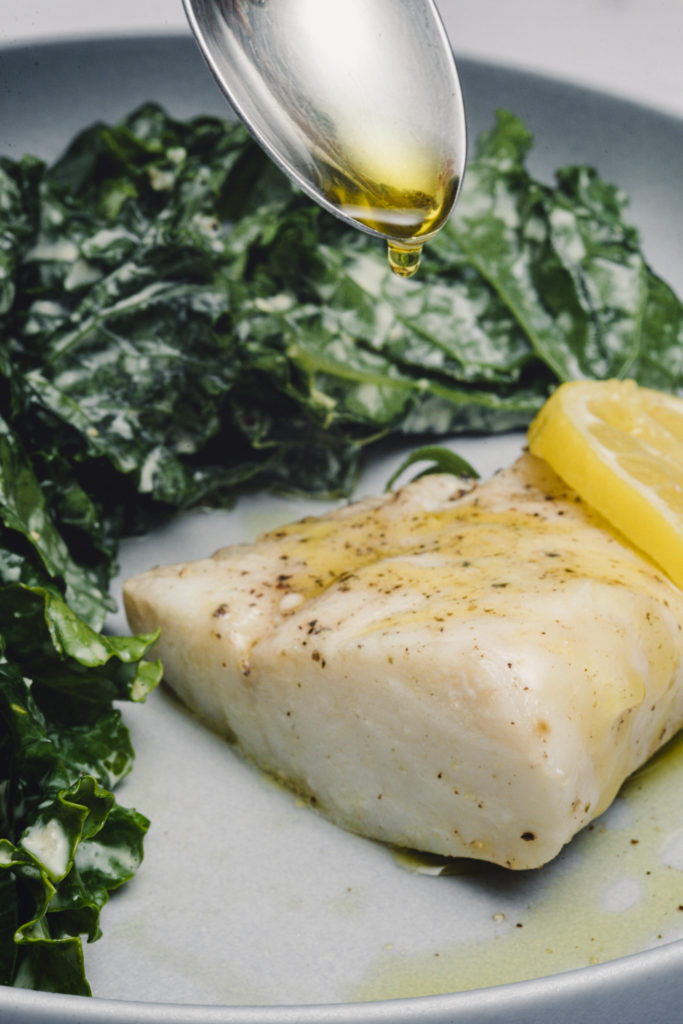
Thinking of dish ideas for the letter “O,” I recalled a fish dish I had in Tulum. In my mind, the dish I remembered so fondly was an “olive oil poached fish,” so I began researching just that. Later, after we devoured this delightfully buttery, flakey fish, I decided to look up that old blog post. I laughed when I read my own words describing it as “saltwater poached fish.”
Buahahahahahaha.
Either I mis-remembered or mis-wrote… either way… we made an an amazing dish, and I highly recommend you do as well! (And maybe at some point, I will try poaching fish in salt water too!)
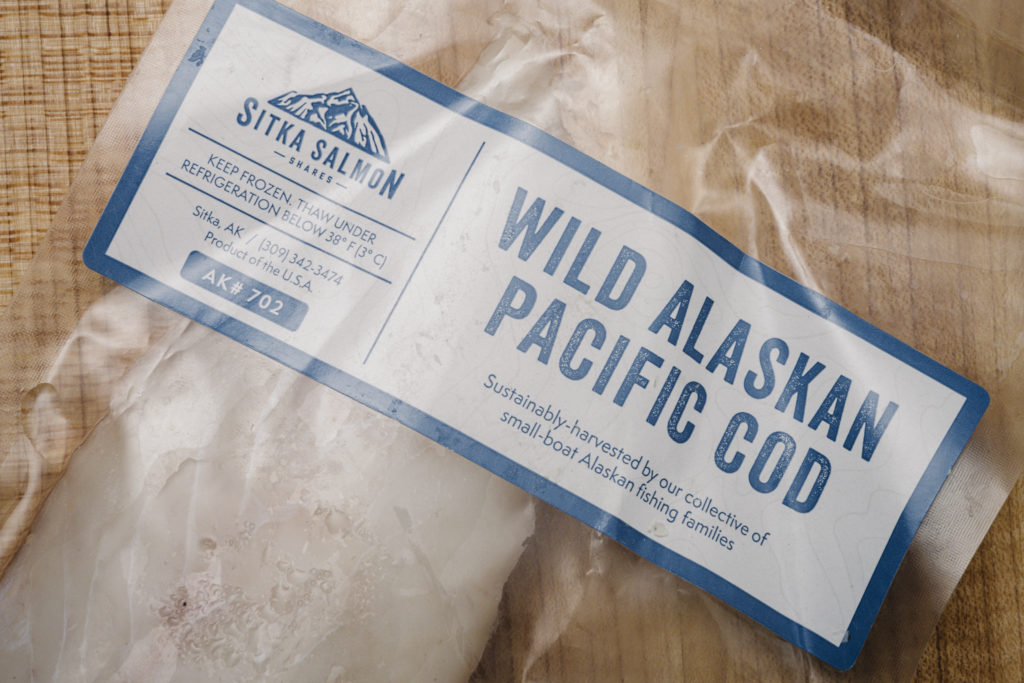
I used Wild Alaskan Pacific Cod for this recipe, but I really think it would work with almost anything. Halibut, salmon… even shrimp would respond well to this cooking method.
BTW… I order my seafood from Sitka Salmon Shares, which contracts directly with the fishermen. They deliver fresh, wild caught seafood to your door each month. If you want to check them out, use my code JAYMEE to get $25 off!
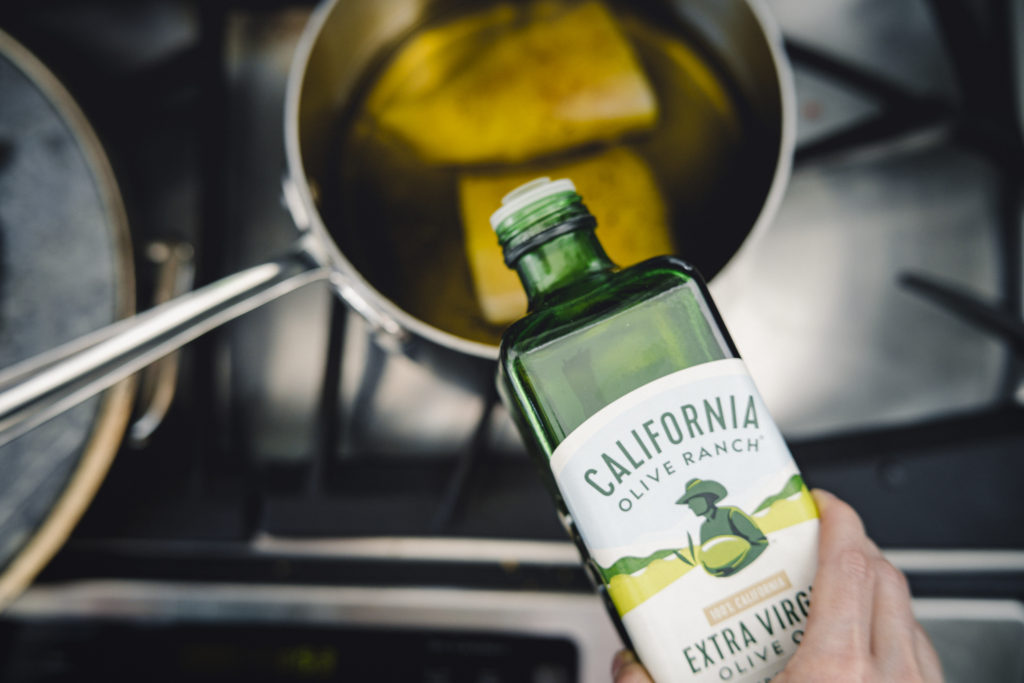
The only drawback to this dish is it requires quite a bit of olive oil. (Like possibly an entire bottle depending on the size of your pan.) Because of that, I would try selecting the smallest pan that will still hold the fish. For this recipe, it’s ok if you crowd them a bit, as long as they are in one layer and completely covered. I also strained the oil after cooking to use it again the next time I want to make poached fish (or maybe tortilla espanola!)
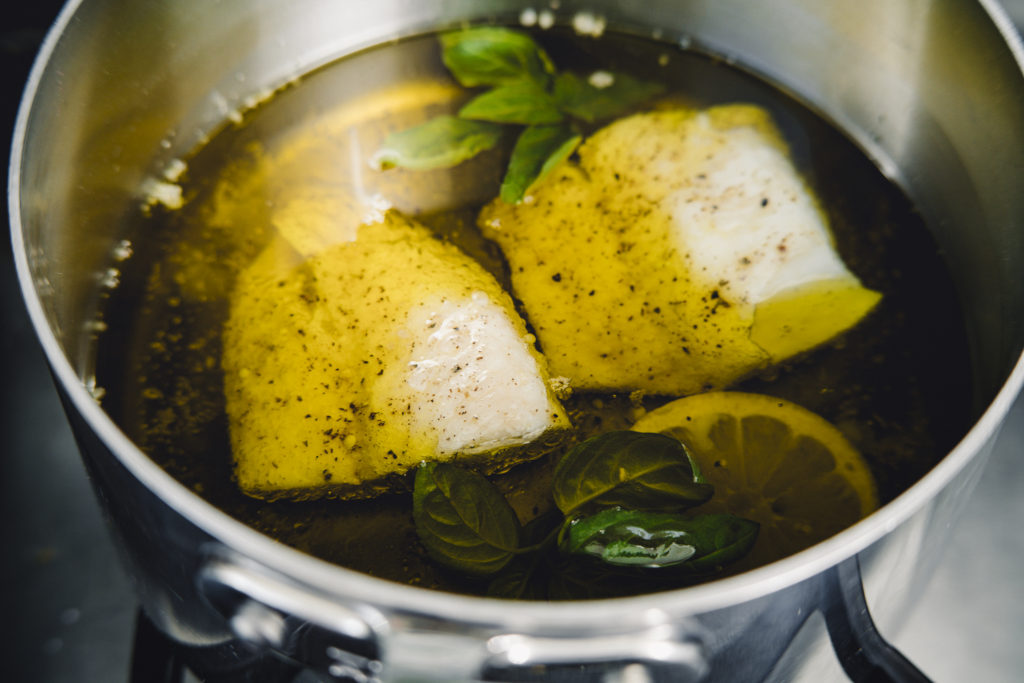
Pre-heat the oil on low. The recipe I found recommended cooking at 120 degrees, but mine was closer to 140 or 150 the whole time. (In fact, I turned off the heat for a majority of the cooking time while the pan retained the heat.)
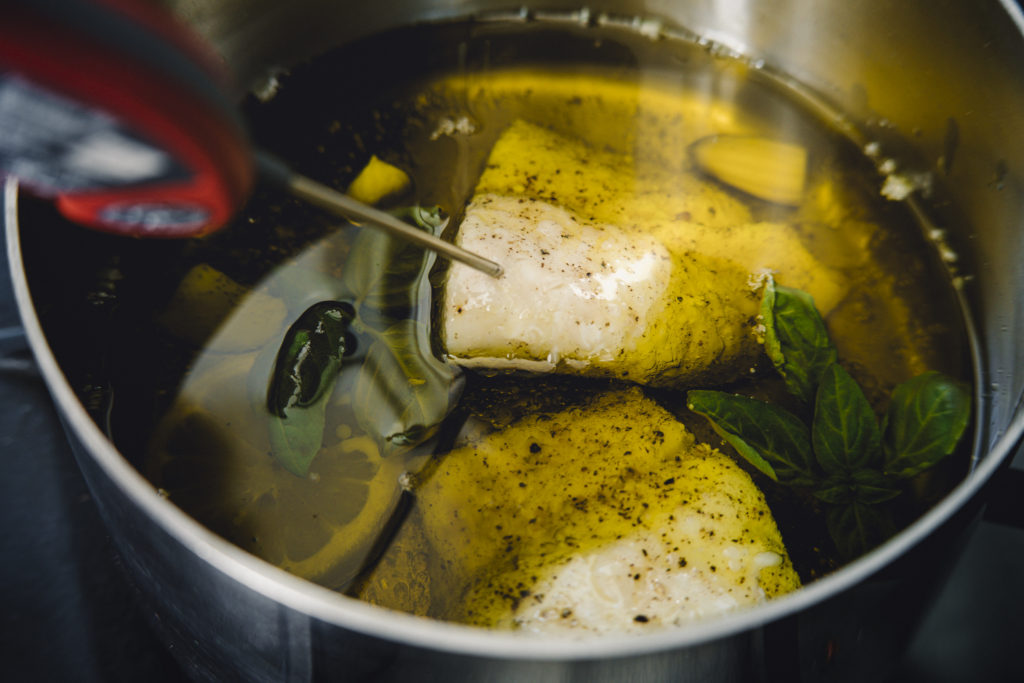
You will start to see small white beads on the surface of the fish. These are the fish proteins and are totally normal. The fish is done cooking when it easily flakes with a fork. You can also use an instant read thermometer, which should register around 140-145 degrees.
NOTE: You actually want the oil to completely cover the fish. Justin snapped this photo after the fish had been cooking for about 15 minutes and had started absorbing some of the oil, so keep an eye on it and add more if you need. I also added some lemon, garlic and fresh herbs, but that part is completely optional!
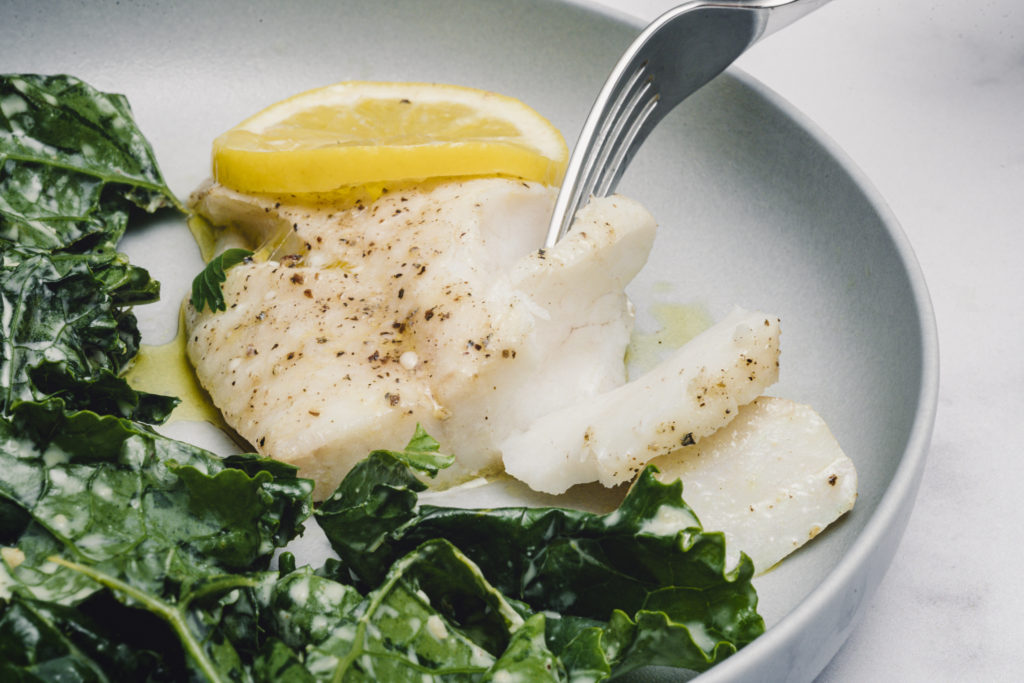
Plate your fish and serve with a squeeze of fresh lemon and a sprinkle of flakey sea salt. The end result is quite possibly the most buttery, flakey, melt-in-your-mouth fish you’ve ever tasted! Have you ever tried poaching fish in olive oil before? Let me know in the comments!
Slowly poaching fish in a low temperature of olive oil results in the most tender, buttery and flakey fish ever! 90 minutes before you want to eat, take the thawed fish out of the fridge and allow it to rest at room temperature for one hour. Season with kosher salt and freshly cracked black pepper. In a small saucepan or sauté pan, add enough olive oil that will completely cover the fish once added. (at least an inch.) Place over low heat until oil reaches somewhere between 120 and 150 degrees. (This won't take very long.) Add 2 lemon slices, garlic cloves and fresh herbs. If temperature continues to rise, turn the heat off and continue monitoring the temperature, adding more or less heat when necessary. Add seasoned fish to the oil and cook for about 20-25 minutes, or until until easily flakes with a fork. Plate and drizzle with some of the olive oil and squeeze fresh lemon over the top and finish with flakey sea salt. Enjoy immediately! Since this recipe requires a lot of olive oil, consider straining and keeping the oil for a future use. (Maybe more poached fish!)Olive Oil Poached Fish
Ingredients
Instructions
Notes

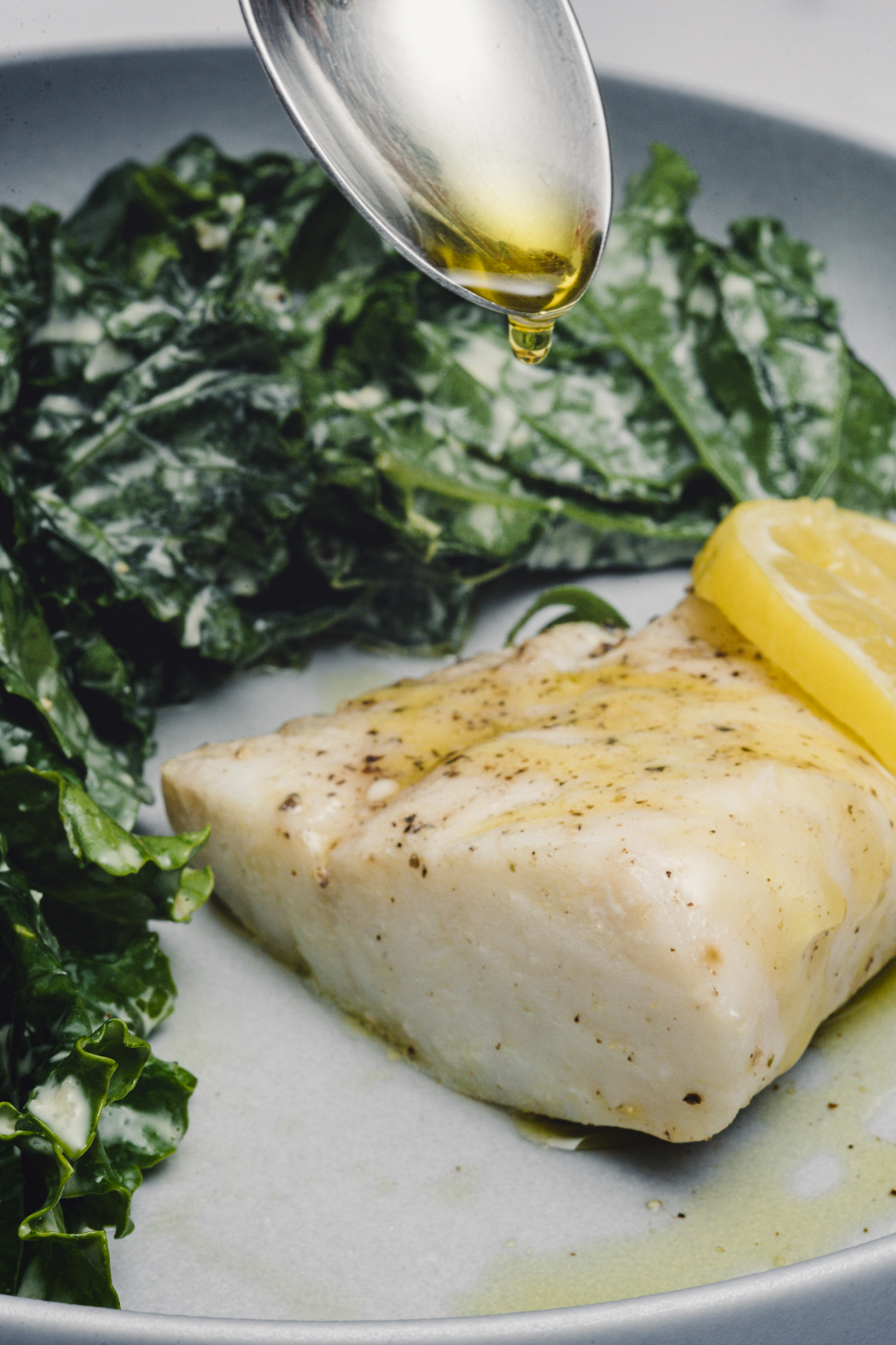


 (6 votes, average: 3.50 out of 5)
(6 votes, average: 3.50 out of 5)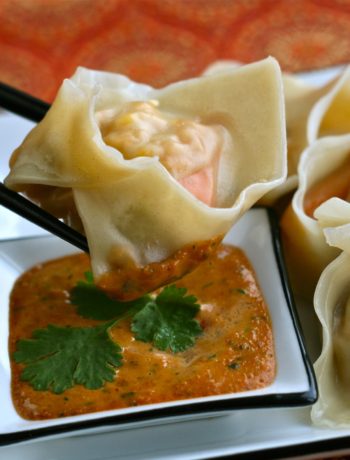
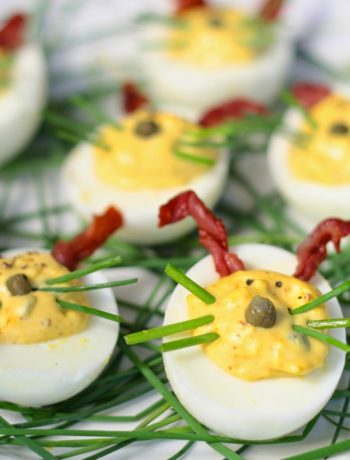
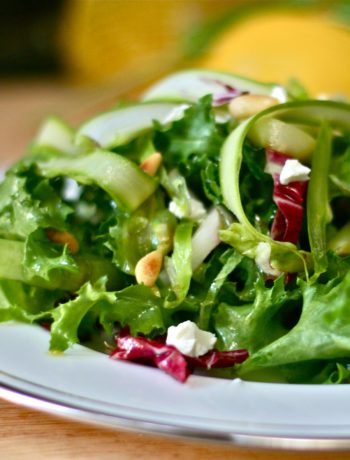
Kiara S
May 28, 2020 at 9:25 pmHmm, I am convinced to try this!
jaymeesire
May 29, 2020 at 5:29 pmYou totally should! I’m actually making it again right now with halibut!